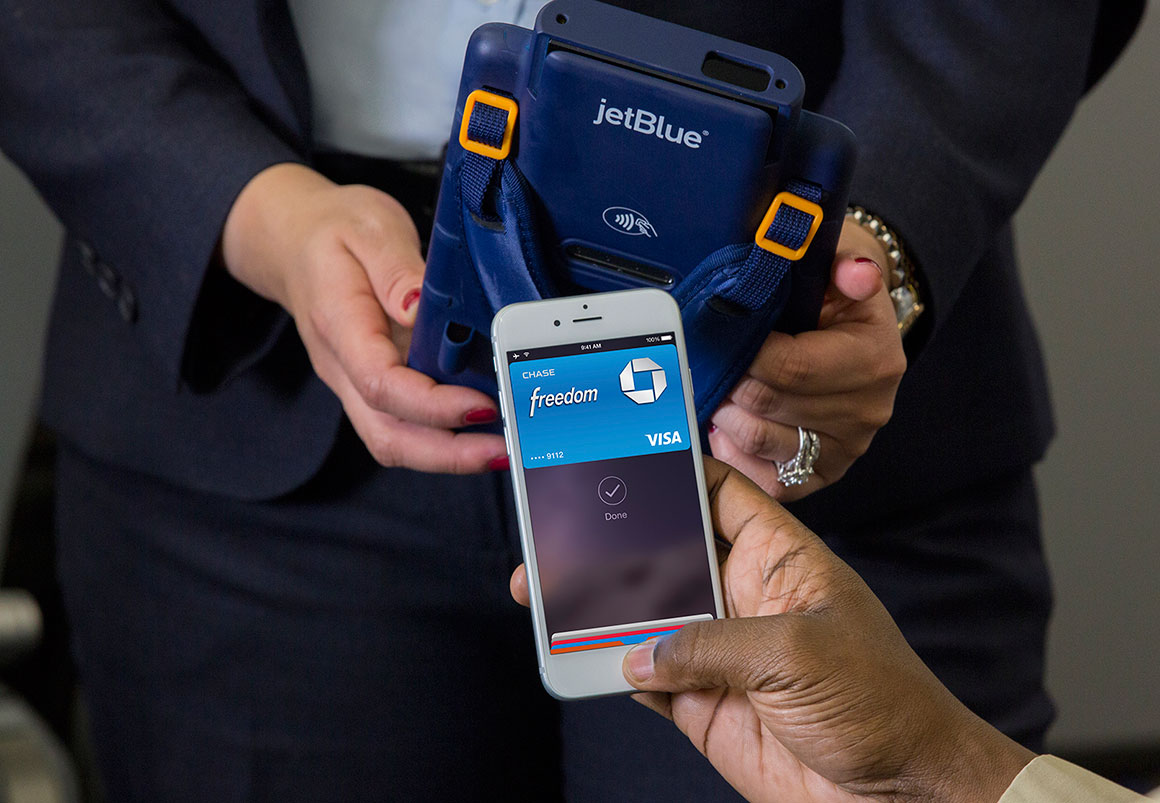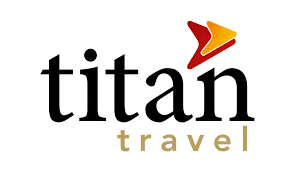Will chip and pin payments take flight?

The JetBlue-Apple Pay tie up has got the industry abuzz and could well mark a watershed in in-flight payment. Fumbling for your wallet and flashing the plastic from a cramped middle seat is no fun. Apple Pay promises an easier experience and contactless transactions look to be the future for air travel.
Since the launch in October 2014 more than one million credit cards signed up and not far behind, over 750 banks have climbed aboard the Apple Pay bandwagon. JetBlue may be the first airline to adopt Apple Pay but you can bet it won’t be the last.
"Somebody else doing it always puts pressure on the other guy," was the platitude offered by Apple’s Eddie Cue.
Who they are, only time will tell but a game-changer it is. It opens up a realm of possibilities for the airline industry both in the air and on the ground. But for now, US airlines have a more pressing need to contend with. The October 2015 deadline for the roll out of EMV (Europay, Mastercard and Visa) compliant credit cards is drawing near. EMV – ‘chip and pin’ cards – provide an extra barrier to credit card fraud and are difficult to counterfeit. This is not an issue exclusive to airlines – the US lags more than a decade behind the rest of the world in adopting it and latest estimates project that there will be less than a 50% uptake by the deadline.
From October merchants who haven’t switched over to chip and pin readers will be liable for any credit card fraud. While by no means infallible to fraud, the new cards would likely have prevented major data breaches such as those at Home Depot and Target.
Although all merchants in every sector have to replace hardware, it is an added headache for airlines due to special safety regulations governing cabin equipment. In-flight entertainment (IFE) systems on some airlines have magnetic strip readers installed which would effectively become obsolete. In flight enterainment hardware manufacturers such as Thales and Panasonic offer chip and pin compliant gear which can also process Apple Pay-like NFC (near field communication) payments and in-flight retail services provider Guestlogix also offers chip and pin enabled handheld point of sale devices.
There are certainly options available to airlines but the time and cost to reconfigure every seatback terminal is probably prohibitive and certainly impractical. The industry has made it clear the October deadline is unsustainable, however major airlines are all quietly going about refreshing cabin interiors. Interestingly, the number of airlines now issuing tablets to flight crew suggests they have one eye on the future, paving the way for the adoption of true in-flight m-commerce via NFC.
Another potentially game-changing development on the horizon for in-flight commerce comes, perhaps inevitably, from Apple nemesis Samsung. It has just acquired tech firm LoopPay, a mobile wallet with a ‘CardCase’ hardware feature, which allows users to store secure payment card information and directly link wirelessly with existing magnetic stripe terminals to make payments without any hardware upgrades. This potentially includes all those clunky IFE magnetic strip readers on aircraft. Depending on its traction and how quickly it comes to market, this could be a potential cost-saving lifeline for the airlines.
TravelMole Editorial Team
Editor for TravelMole North America and Asia pacific regions. Ray is a highly experienced (15+ years) skilled journalist and editor predominantly in travel, hospitality and lifestyle working with a huge number of major market-leading brands. He has also cover in-depth news, interviews and features in general business, finance, tech and geopolitical issues for a select few major news outlets and publishers.
 United Kingdom
United Kingdom United States
United States Asia Pacific
Asia Pacific












































Dozens fall ill in P&O Cruises ship outbreak
Turkish Airlines flight in emergency landing after pilot dies
Boy falls to death on cruise ship
Unexpected wave rocks cruise ship
Storm Lilian travel chaos as bank holiday flights cancelled